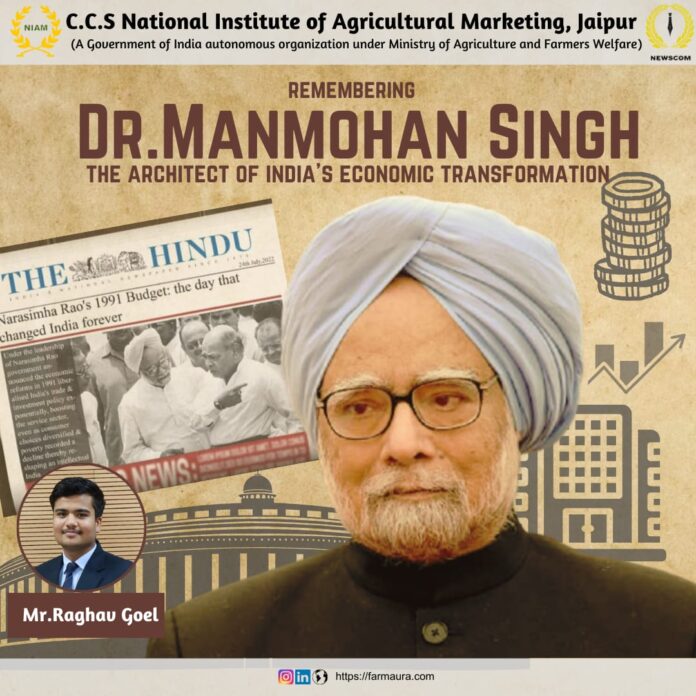Dr Manmohan Singh is one of the most significant people in the modern history of India. He shaped India’s economy and made its development what it is today. With his intellect and moral fibre, Dr. Singh’s contributions etched themselves in the nation’s memory.
Early Life and Education
Dr. Singh was born on September 26, 1932, in Gah, now in Pakistan. A bright student, he excelled in economics at Panjab University before furthering his studies at the University of Cambridge and the University of Oxford, where he earned a doctorate in 1962 focused on trade and development.
As RBI Governor: Major Policy Highlights (1982–1985)
Dr. Manmohan Singh served as the Governor of the Reserve Bank of India (RBI) from September 16, 1982, to January 14, 1985. During his tenure, he implemented critical monetary policies to address economic challenges. In 1982-83, amidst severe drought conditions, lending rates were lowered, and the Cash Reserve Ratio (CRR) was reduced to support economic activity. Economic growth rebounded in 1983-84, leading to incremental increases in CRR to manage liquidity and inflationary pressures. In 1984-85, monetary expansion was addressed through reserve ratio adjustments, selective credit controls, and an increase in the Statutory Liquidity Ratio (SLR) to 36%.
Architect of Economic Reforms
In 1991, Dr. Singh was appointed Finance Minister of India at a time when the country was in the grips of a deep economic depression. He introduced fundamental reforms that transformed India’s economy and made it more accessible to the world.
The 1991 Economic Liberalization
In 1991, India was running out of money to pay for its imports. To solve this problem, Dr. Singh made big decisions like reducing taxes on imports, encouraging foreign investments, and ending the License Raj—a system where businesses had to get many government approvals to operate. These reforms made India’s economy more competitive and innovative.
He cited Victor Hugo in one of his most celebrated speeches, saying that: ” No power on Earth can stop an idea whose time has come.” He believed that India was on its way to being a successful nation on a global scale. The reforms he brought steady growth, more employment, and better business prospects.

Source:https://data.worldbank.org/indicator/BX.KLT.DINV.CD.WD?locations=IN
Leadership as Prime Minister
Dr.Singh served as India’s Prime Minister from 2004 to 2014. During this time, he focused on both growing the economy and helping the less fortunate. Under his leadership, India’s economy grew by an average of more than 7% each year.

Source:https://data.worldbank.org/indicator/NY.GDP.MKTP.CD?locations=IN
Policies for Equitable Growth
Dr. Singh’s government introduced programmes like the Mahatma Gandhi National Rural Employment Guarantee Act (MGNREGA) which assured jobs for citizens in villages. This was coupled with the Right to Education Act which ensured free education for all children, thereby establishing his intention for without exception economic growth. Just rich could not benefit from it.
Navigating Global Challenges
Dr. Singh’s expertise as an economist came into play when the global financial crisis struck in 2008, and he went ahead to protect India economically. He invested in infrastructure, controlled government expenses and encouraged citizens to spend money within a country. These measures helped make India recover faster than other countries.
Under the rule of Dr. Singh, India emerged as one of the fastest-growing countries in the world between 2004 and 2014. This period from 2004 to 2008 was a golden period with GDP growth going up to 9% annually. Huge amount of investment poured into all sectors with a support from huge international capital inflows and roaring stock markets. Yet his term had succeeded in laying the foundation for India’s economic power, notwithstanding inflation and the global financial crisis.
Industrial Impact
Manmohan’s period in history, at once a finance minister and a prime minister, remains mostly for reforms that transformed the industrial landscape of corporate India. His policies laid the foundations on which Indian multinational firms such as Tata, Infosys, and many others emerged. This period turned India into a significant exporter of goods, services, and talent.
Narayana Murthy, Founder of Infosys, praised Dr. Singh as a gentleman, a scholar, and a value-based politician. He credited Dr. Singh’s leadership in economic reforms for laying a strong and durable foundation for India’s accelerated economic growth. Similarly, N. Chandrasekaran, Chairman of Tata Sons, described him as a stalwart who envisioned a liberalized India taking its rightful place on the global stage.
Legacy and Enduring Impact
The works of Dr. Manmohan Singh have left an indelible print on India. Economic reform during the nineties laid the very foundation for growth and development in the country. Millions of jobs were created, and India became better connected to the global economy.
Inspiration for Future Leaders
The life and career of Dr. Singh will continue as a source of inspiration for many. Knowledge, integrity, and meticulous planning, he demonstrated, would solve even the gravest problems. The way in which he sought to tie economic growth with fairness and social justice would be matched by leaders everywhere.
Conclusion
Dr. Manmohan Singh’s contributions to India are unmatched. He helped steer the country through difficult times and created opportunities for future generations. Remembering his achievements reminds us of the power of good leadership and the importance of working for the greater good. His legacy will continue to guide India as it strives for prosperity and equality.




